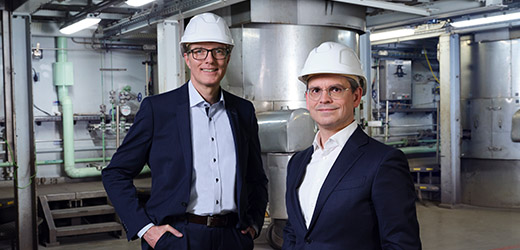Taxonomy-Aligned Economic Activities
Our taxonomy-eligible economic activities under Annex I of Commission Delegated Regulation (EU) 2021/2139 and Commission Delegated Regulation (EU) 2022/1214 supplementing Taxonomy Regulation (EU) 2020/852 can be categorized in particular as the “Manufacture of plastics in primary form” at WACKER POLYMERS and WACKER SILICONES.
In this context, we were able to prove that the requirements for a substantial contribution to climate change mitigation are met as regards Criterion c) “manufactured... wholly or partially from renewable feedstock” for one part of the above-mentioned activity.
The corresponding DNSH (Do No Significant Harm) criteria in Appendix C of Annex I were also assessed for the activities identified as taxonomy-aligned, with the result that these criteria were met as well.
It should be noted that, especially when we interpreted the DNSH criteria in Appendix C, the entire production process of each activity was taken into consideration. In complying with the requirements of Appendix C, Point c), which references Regulation (EC) 1005/2009, we refer in particular to Art. 24 (1) and to the terms defined in this regulation. Chloromethane (methyl chloride), which is mentioned in Part B of Annex II, is used as a base material in the manufacture of silicone products. It is produced as an intermediate in a closed system, subsequently reacts in a further process and is no longer present in the finished product. Consequently, it cannot be released either. Within the meaning of Art. 24 (1), use of this substance as a base material is permissible and thus not subject to the ban. In general, the technical departments involved assess all the substances using well-established processes as regards hazard potential and the regulatory requirements of Appendix C. In order to comply with the requirements of Appendix C, Point f) of Regulation (EC) 1907/2006, all the raw materials used throughout the entire production process are taken into consideration. The use and deployment of these materials is permitted under the applicable regulations and production processes are in place to ensure they are utilized safely. They react during the production process and are no longer present in the final product.
Within the meaning of Annex C, Point f) in connection with Regulation (EC) 1907/2006, the base materials used are essential to silicone production and cannot be replaced as there are no alternatives. Silicone products are essential because they make a key contribution to society. For instance, they are used in wind turbines, in energy supply networks, in electromobility and in various medical applications.
The minimum safeguard requirements for each activity have been complied with in the areas of human rights, corruption, fair competition, and taxation by means of existing and enhanced processes.
As far as the other activities identified as taxonomy-eligible are concerned – namely “Electricity generation from hydropower,” “Construction, extension and operation of waste water collection and treatment” and “Highly efficient combined heat and power with gaseous fossil fuels” – alignment with the taxonomy does not yet have to be proven because the corresponding technical assessment criteria cannot yet be met.

